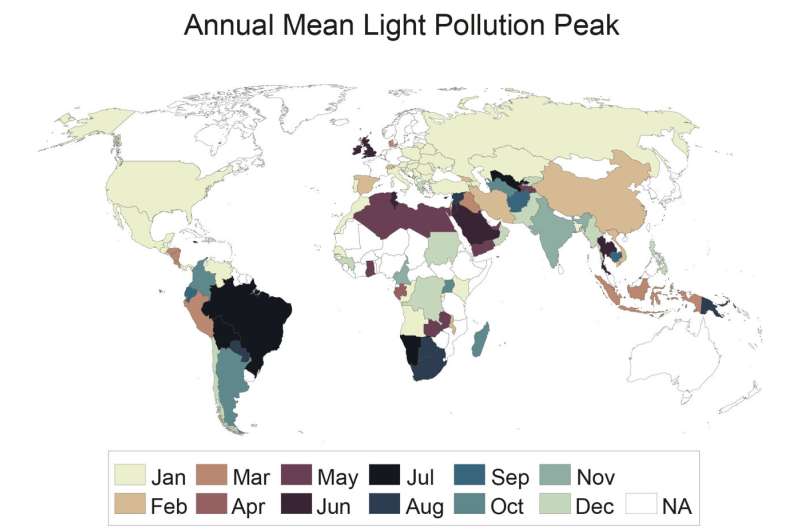
A new research by a team from the Institut de Ciències del Mar (ICM-CSIC) and the Museo Nacional de Ciencias Naturales (MNCN-CSIC) in collaboration with Australian and New Zealander researchers has shown how the major festivities of different human societies modulate light pollution patterns on a global scale.
Christian Christmas, Muslim Ramadan, Chinese New Year and Hindu Diwali vary night-time lighting intensity depending on the celebration. The study, published in the journal People and Nature, highlights the close relationship between light pollution levels and cultural activity in our society, whose effects extend beyond urban areas.
Night landscape transformation caused by artificial light, commonly known as light pollution, is an unmistakable mark of human activity on Earth, and has serious consequences for living organisms.
“Understanding how human activities influence light pollution is key to assessing its impact and designing possible mitigation measures,” states the ICM-CSIC researcher Dr. Francisco Ramírez. “Previous studies have related the economic development of countries to their light pollution patterns, determining that, in general, are the richest the ones that pollute the most. However, this is the first time that we have assessed how certain socio-cultural activities affect light pollution on a global scale.”
To carry out this work, researchers analyzed satellite images showing the light intensity between 2014 and 2019, which made it possible to obtain data on this type of pollution on a global scale. The subsequent analysis confirms that a peak of light pollution occurs during Christmas in Christian countries, while in Muslim and Hindu countries the annual peaks coincide with Ramadan and Diwali, respectively. In the case of China and Vietnam, the peak of light pollution coincides temporally with the celebration of the New Year.
“Our results show that festivities and celebrations involving large concentrations of people and the use of night-time lights affect the seasonal pattern of light intensity, which can have effects on a wide variety of species,” explains the ICM-CSIC researcher Dr. Marta Coll. “This is what happens to a wide variety of species that are attracted to artificial lights, often with fatal consequences.”
For his part, the MNCN-CSIC researcher and world authority on light pollution and wildlife Dr. Airam Rodríguez points out that “variations observed in pollutant light levels from the celebrations could be greater, as the sensor with which satellite images used in our study are taken are not very sensitive to blue light. However, it is precisely that type of light, i.e., light emitted in the blue range, that is the most harmful to human health and wildlife biodiversity.”
“This work provides a solid basis for developing planning and management measures to mitigate the effects of light pollution,” adds Dr. Andre Chiaradia, from the Phillip Island Nature Parks in Australia.
“The data obtained reveal the need for continuous monitoring of this type of pollution to understand its effect on the natural environment and to be able to develop global policies aimed at promoting a use of artificial lights that is compatible with the preservation of the natural world,” concludes Dr. Chiaradia.
More information:
Francisco Ramírez et al, Large-scale human celebrations increase global light pollution, People and Nature (2023). DOI: 10.1002/pan3.10520. besjournals.onlinelibrary.wile … i/10.1002/pan3.10520
Journal information:
People and Nature
Provided by
Spanish National Research Council
Major festivities modulate light pollution patterns on a global scale (2023, August 16)
retrieved 27 September 2023
from https://phys.org/news/2023-08-major-festivities-modulate-pollution-patterns.html
part may be reproduced without the written permission. The content is provided for information purposes only.